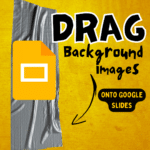Aren’t we all tired? One thing we have learned over the years is that this job will keep taking taking taking. Educators are kind giving people who want to do what is best for their students. Sometimes the phrase “what is best for kids” is weaponized against us by people who want us to give more but are not doing what is best for kids. You have earned a break and you should not feel guilty for taking one.
If you needed to hear it: DO NOT DO SCHOOL WORK OVER THE BREAK

As teachers, it’s easy to fall into the trap of working non-stop, sacrificing our own well-being for the sake of our students. We may feel that we need to constantly be working on lesson plans, grading papers, or attending meetings, but the truth is that taking regular breaks is essential for our health and productivity.
Research has shown that taking regular breaks can improve our mental clarity and focus, reduce stress and burnout, and boost our overall well-being. In fact, studies have found that people who take regular breaks are more productive and creative than those who work without interruptions.
But why is it so difficult for teachers to take a break? One reason is that we often feel guilty for not working. We may think that taking a break means we’re not doing our job well, or that we’re not meeting the needs of our students. However, this is a misguided belief. In reality, taking regular breaks is an important part of being a good teacher.
Here are a few tips for incorporating breaks into your daily routine:
- Set aside specific times for breaks. This could be a few minutes every hour, or longer breaks in the morning and afternoon. The key is to schedule your breaks in advance, so that you can look forward to them and make the most of your time off.
- Use your breaks to recharge and refresh. This could mean going for a walk, listening to music, reading a book, or engaging in a relaxing activity. The important thing is to do something that you enjoy and that helps you unwind.
- Avoid working during your breaks. It may be tempting to check your email or grade papers during your break, but it’s important to disconnect from work and allow yourself some time to relax and recharge.
- Share your break time with others. Spending time with friends and colleagues can be a great way to unwind and recharge. You could meet for a coffee, go for a walk, or even just sit and chat.
- Practice mindfulness or meditation. Taking a few minutes to focus on your breath and let go of any thoughts can be a great way to de-stress and relax.
- Get some exercise. Physical activity can help reduce stress and boost mood, so going for a run or hitting the gym can be a great way to take a break from work.
- Take a nap. If you’re feeling tired, a short nap can help recharge your batteries and give you the energy you need to tackle the rest of the day.
Catching Up on School Work
Setting boundaries and sticking to them is important in order to not feel you have to use your break to catch up on school work. If you have a HARD RULE that you do NOT do work over breaks it will keep you from thinking “I will catch up over the break.” According to Parkinson’s Law a task will take exactly as long as you have. So if you have winter break to do your work it will require doing work during your winter break.
Once you set firm (FIRM) boundaries in place as to when you will be doing work adjust what you assign for yourself to do so it can be done during that time. The sky will not fall if you do not grade everything… hint, do not grade everything.
It is okay to move forward. There are times I just can’t seem to catch up. So I just decide to give myself and my students a break and move forward. Adjust accordingly to give credit and not stress about it. One “trick” is to have students reflect and self evaluate. This makes it much faster to agree or disagree. The added bonus is it is literally better for students anyway!
Setting Boundaries to Avoid Doing Work During the Break
To set boundaries and stick to them so as not to do work over the break, teachers can try the following steps:
- Identify the specific boundaries that you want to set. This could include things like not checking email or not grading papers during the break.
- Communicate your boundaries to others. Let your students, colleagues, and supervisors know that you will not be available for work-related activities during the break.
- Create a plan for how you will enforce your boundaries. This could include setting up an out-of-office message on your email or delegating certain tasks to others.
- Make it a priority to take care of yourself during the break. Engage in activities that help you relax and unwind, and make sure you get enough rest and relaxation.
- Avoid situations that might tempt you to break your boundaries. For example, if you know that checking email is a trigger for you, avoid checking your email during the break.
By setting clear boundaries and sticking to them, teachers can ensure that they have the time and space they need to recharge and relax during the break. This can help them avoid burnout and be more effective in their work.
No School Work
You can do it! No school work during the break. Cut yourself slack! When you are rested you are a better teacher. Enjoy your break!
-
Hide All Tabs – Google Sheets
Have a lot of tabs in your Google Sheets spreadsheet? Here is how to hide all tabs at once, quickly.
-
Transform Your Lessons: The Power of Desmos Classroom Computation Layer
Take Desmos Classroom even further with the computation layer. Customize your lesson with the CL.
-
Get Real-Time Insights into Student Thinking
Desmos Classroom is a FREE tool that allows you to gain real time insights into student thinking during a lesson.
-
Analyzing AI Created Rubrics Essentials for Teachers
Analyzing AI Created Rubrics: Discover the critical elements of effective rubrics and how to assess the quality of AI-generated options.
-
Add a Color Key in Pixel Art
Pixel Art in Google Sheets is really fun, but how do you know what number corresponds to what color? Add a color key in pixel art.













